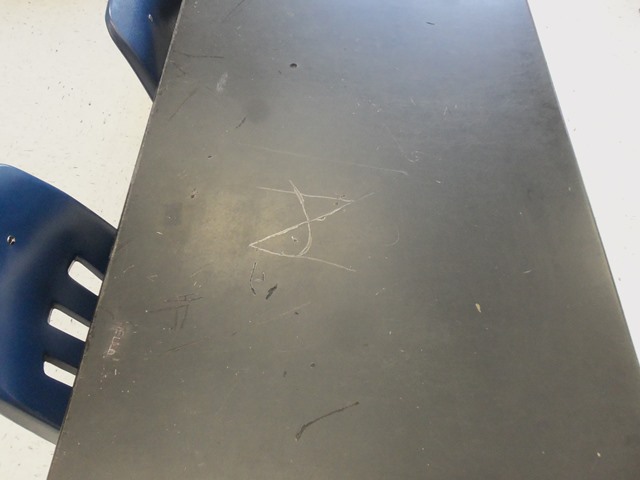Besides individual desks, I have some tables in my room for students to sit at. They are the black-surfaced lab table type. There are many places where the black surface has been scratched away. Surprisingly few of the scratches spell words. Mostly they’re just lines or carved out spots.
I remember Debbie had this problem and sanded and painted the tables. I dreaded so much work. Fortunately, a student provided me with a different solution. I had lent him a permanent marker for something he was labeling, and in his boredom during class, he colored in one of the scratches. It almost entirely disappeared! I tested it for colorfastness in various ways. It did not rub off onto my finger or other test materials.
The next day, I gave him the marker again and asked him to fill in every scratch on the table. He loved it! And my table has never looked so good.

There is some spill-over, but I think it will fade with time.
Much better solution, I think. Sadly, using black paint with latex in it did not work best on Deb’s tables (Sorry, Debbie…sorry, Mr. Bill, who did all the work!). Gradually over time bits and pieces have flaked off, been scratched off, or been pulled/stretched off more than one of the tops. I doubt the colored marker technique would have much impact on the original surfaces now, but it’s worth a try. To be continued…
That is also the method for fixing scuff marks on black shoes. At least in my book!
So, are those soapstone tables? (Those are incredibly cool.) If they are, I want to say that you can use mineral oil on them. (Google check: yes. http://www.soapstones.com/soapstone-care-maintenance/)
No before picture? I’m disappointed.